Plants that Survive
 Sunday, September 22, 2019 at 7:30PM
Sunday, September 22, 2019 at 7:30PM I was gazing at a garden magazine the other day. It featured an English garden in late summer; colorful masses of blooming perennials mocked me from the glossy pages.  Sigh. My garden will never look like this public domain photo.In my garden, except for a few scraggly annuals, there is almost nothing blooming. Even plants advertised to flower from late summer into fall have decided to forget it. The goal is survival.
Sigh. My garden will never look like this public domain photo.In my garden, except for a few scraggly annuals, there is almost nothing blooming. Even plants advertised to flower from late summer into fall have decided to forget it. The goal is survival.
September here can be good or bad. This year it has been awful. The problem is that in the past 6 weeks we have had a total of 0.3 inches of rain (according to my rain gauge), and at the same time we have had daily near triple digit heat. Remember, I don't live in a desert. In February, we received 13 inches of rain. Plants have to survive wet winters with mild temps interspersed with hard frost, as well as steamy, hot summers that are subject to drought. What plants can survive that? The biggest challenge is summer. We water constantly, but plants that thrive in other seasons may not make it through the summer. By the end of September there is always a death toll.
Ignoring shriveled leaves and dead branches, I took a walk in late afternoon one day to take shots of the garden. Most of what is doing well is green. Here are scenes from the woodland garden: 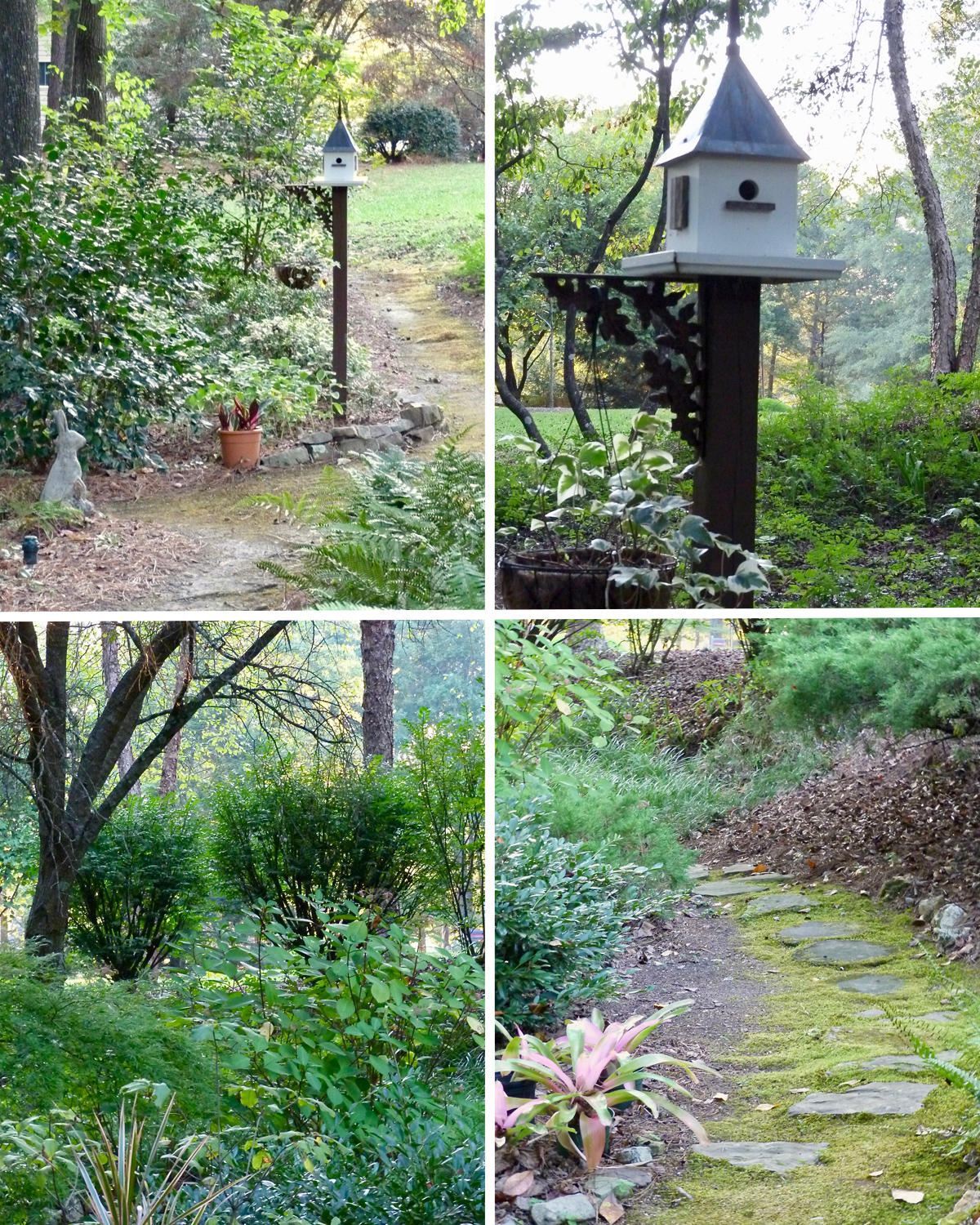
Evergreens that flourish with minimal care and little extra watering: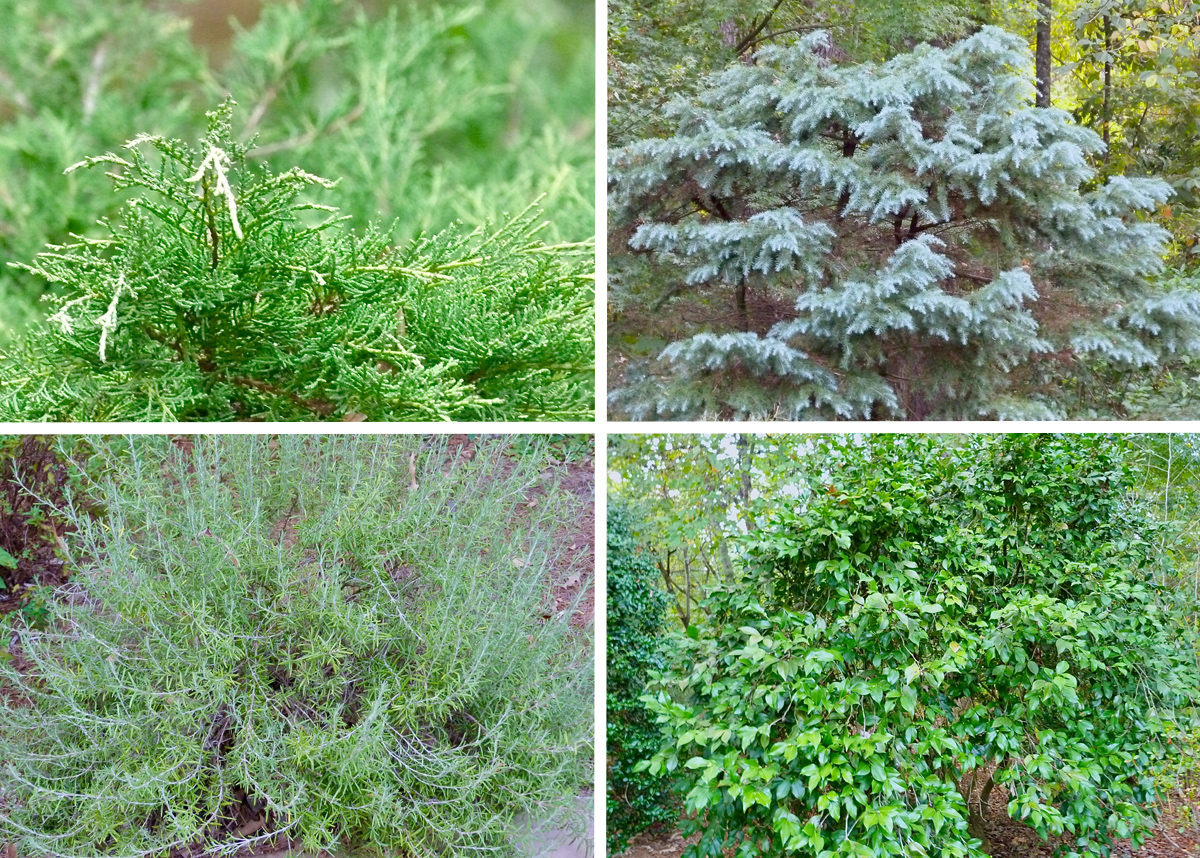 Clockwise from above left: Juniper 'Saybrook Gold'; Deodar cedar 'Feelin'Blue'; Various camellias - this one was here when we came in 1985, and I don't know its name; Rosemary.
Clockwise from above left: Juniper 'Saybrook Gold'; Deodar cedar 'Feelin'Blue'; Various camellias - this one was here when we came in 1985, and I don't know its name; Rosemary.
Here are some undemanding decorative trees: Clockwise from top left: Cryptomeria japonica; Southern Magnolia; Burford holly (All types of hollies in my garden are doing well.); Crape myrtle, which has bloomed for months. Japanese maples have done fairly well, though I did lose a mature one to ambrosia beetles last year. Some leaves are looking fried, but most are OK so far. If the drought extends another month, I think the leaves will turn brown and fall before they can assume their fabulous autumn tints.
Clockwise from top left: Cryptomeria japonica; Southern Magnolia; Burford holly (All types of hollies in my garden are doing well.); Crape myrtle, which has bloomed for months. Japanese maples have done fairly well, though I did lose a mature one to ambrosia beetles last year. Some leaves are looking fried, but most are OK so far. If the drought extends another month, I think the leaves will turn brown and fall before they can assume their fabulous autumn tints. The leaves of Japanese maples are just beginning to show signs of coming fall colors.
The leaves of Japanese maples are just beginning to show signs of coming fall colors.
Here is a September view through the jasmine arch. Green is supreme: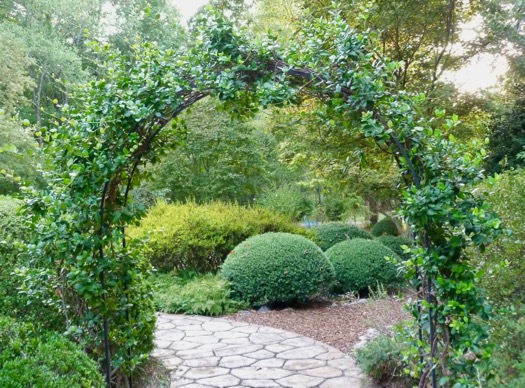
One can see signs of drought inside the front garden. Dogwood trees are wilting badly. Some won't make it: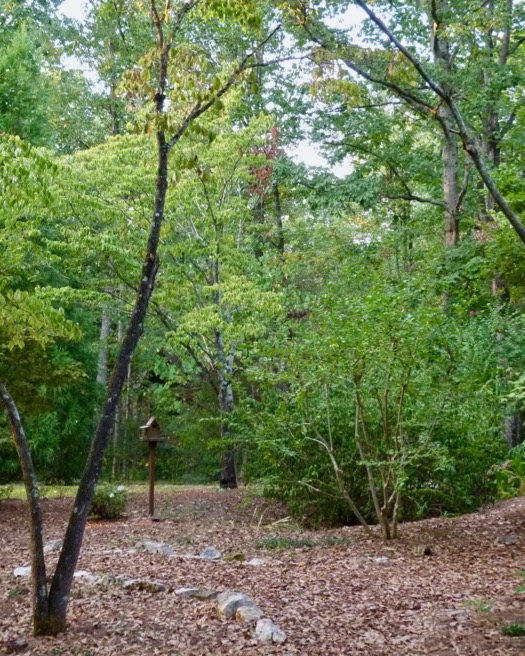
 The winged fruit of this trident maple, as well as other types of maples, are called samaras.
The winged fruit of this trident maple, as well as other types of maples, are called samaras.
 This Hydrangea 'Lady in Red' needs daily watering during the droughty, hot weather we are experiencing.
This Hydrangea 'Lady in Red' needs daily watering during the droughty, hot weather we are experiencing.
Here is the "Lady of the Woodlands." She has acquired a lot of patina over the years. Her current hairdo is variegated creeping fig:
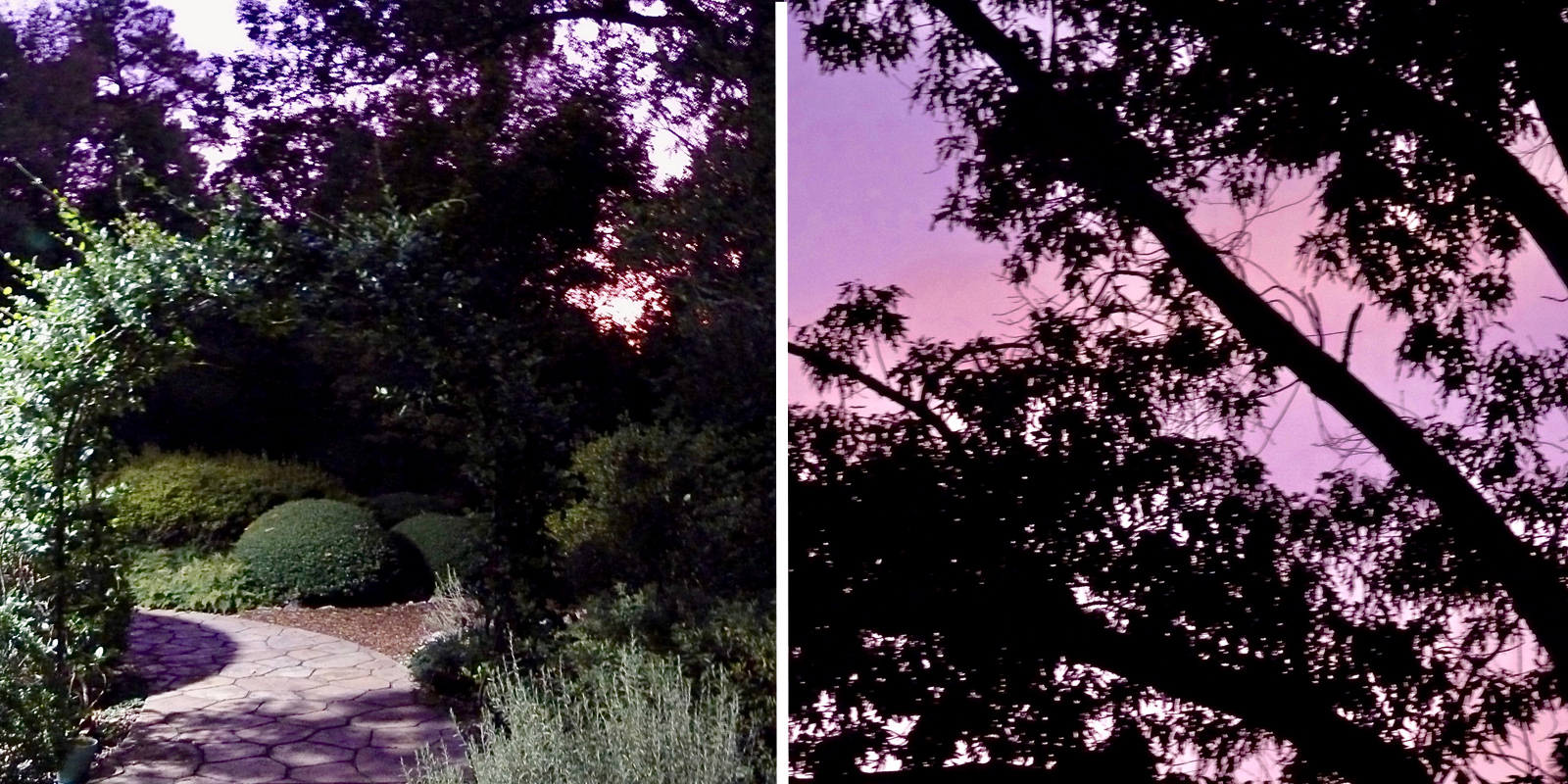 Finally, as the sun is setting, dusk hides faults within the garden. The air is cooler, and I know fall is eventually going to arrive, along with rain. Blessings to you all, Deb
Finally, as the sun is setting, dusk hides faults within the garden. The air is cooler, and I know fall is eventually going to arrive, along with rain. Blessings to you all, Deb








